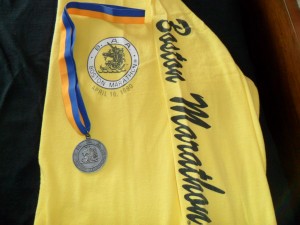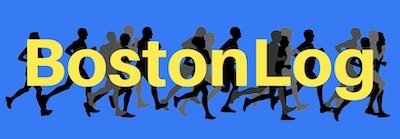My running career began in 1987, when at the age of 35, I decided it was time to lose a little weight. I ran my first race that May (the Coca-Cola Classic 10K in Corinth, MS), and found a new addiction. Over the next several months I participated in numerous local 5K’s and 10K’s.
My running buddies were all more experienced, so I often listened and followed their advice. By the next year they suggested I move up and attempt a marathon. I signed up for the 1988 Tupelo Marathon and completed the distance in a time of 3:50.
Whenever the subject of marathons came up, my running buddies always talked about how great it would be to run in Boston. In 1989, the Boston Athletic Association decided to add ten minutes to the basic qualifying time for the 1990 race and to allow additional time for each five year age group starting with age 35 – 39. One buddy suggested this would probably be a one year experiment and then the faster qualifying times would return in the following years. We decided we better qualify that year because it might be our only chance to run the race. I registered for the Vulcan Marathon in Birmingham AL, and ran in a time of 3:09, thus qualifying for Boston. Several of my running buddies also ran qualifying times and we all eagerly signed up. There were a total of 9,362 registered runners that year – the largest group ever entered.
 We made the trip to Boston. My brother-in-law lived in the area, so I stayed with him while the others stayed at a downtown hotel. On Monday morning my brother-in-law dropped me at their hotel on his way to work. Our group was full of anticipation and rushed to get to the bus loading area. We didn’t have to stand in line very long and got on one of the first buses for our ride to Hopkinton. The buses stopped at the local high school to unload where the Athletes’ Village was set up. The gymnasium at the high school was open, but it quickly became crowded and we decided to wait outside for the start of the race.
We made the trip to Boston. My brother-in-law lived in the area, so I stayed with him while the others stayed at a downtown hotel. On Monday morning my brother-in-law dropped me at their hotel on his way to work. Our group was full of anticipation and rushed to get to the bus loading area. We didn’t have to stand in line very long and got on one of the first buses for our ride to Hopkinton. The buses stopped at the local high school to unload where the Athletes’ Village was set up. The gymnasium at the high school was open, but it quickly became crowded and we decided to wait outside for the start of the race.
All of my previous marathons were morning races, but Boston didn’t start until noon. It was a warm day so we lay in the grass and worked on our suntans for almost two hours. Unfortunately, no one brought any water and we were all slightly dehydrated when they fired the starting gun. We made sure to drink liquids at every aid station and hoped for the best. By the sixth mile, one member of our group was already taking walking breaks and it didn’t take long for others to follow suit. I struggled through the first 20 miles before my muscles started cramping. The routine for the next six miles involved running until one of my legs cramped, then stopping to wait for it to ease, then running until the other leg cramped, then stopping to wait for it to ease and then repeating the whole process.
When I turned onto Boylston Street and saw the finish banner, I knew this painful journey was almost over. It was at that point both legs cramped at the same time. I could see the finish line, but I was stationary in the middle of the street biting my lip waiting for my leg muscles to relax. A well-meaning spectator screamed, “Don’t stop now. Keep moving. You’re almost there!” If I would have tried to move, I’m sure I would have planted my face on the pavement. I’m sure it was only a few seconds, but it seemed like I stood there for a long time before I was able to move again. I limped to the finish line in a time of 3:23 and proudly received my medallion.
I went back to Boston to run the marathon in 1994 and again for the centennial in 1996. It wasn’t the same experience. The first time holds the most memories.
Dave Branner
Tupelo, Mississippi
April 17, 1990
3:23
